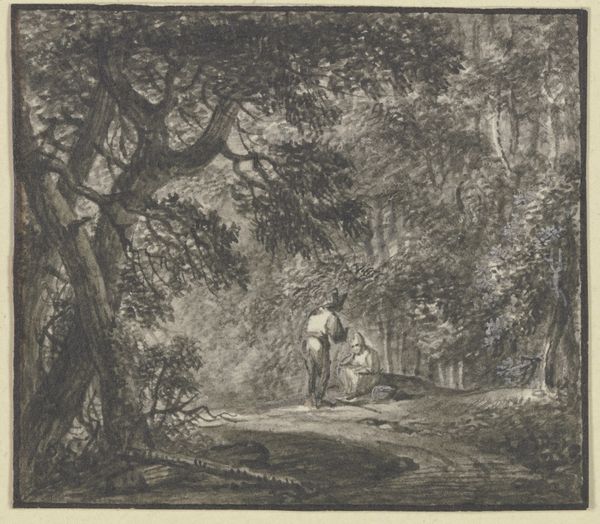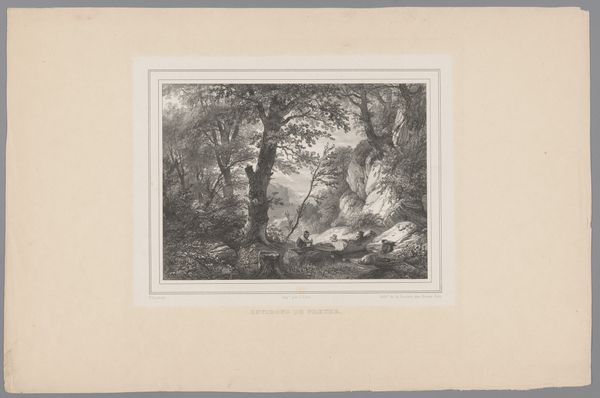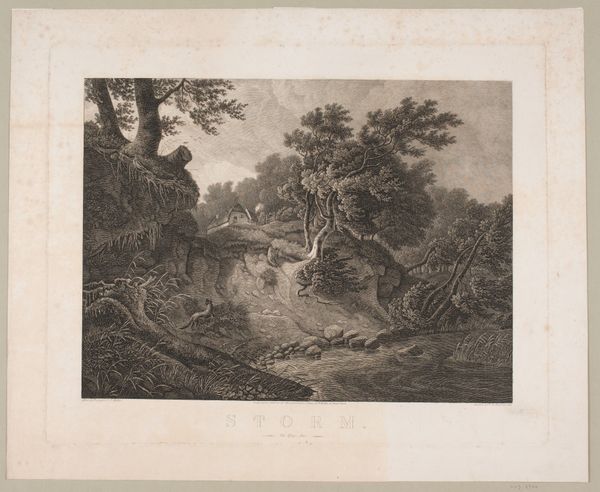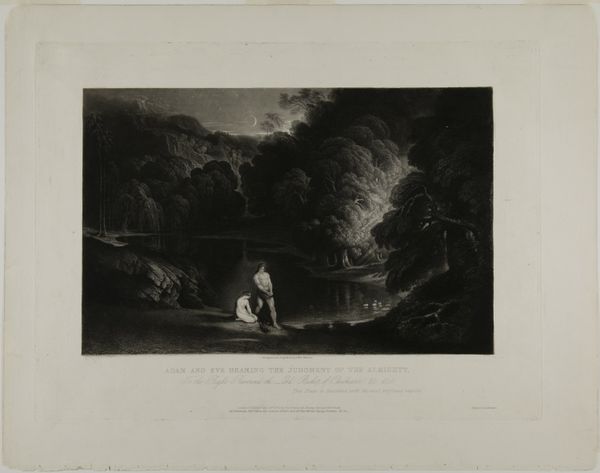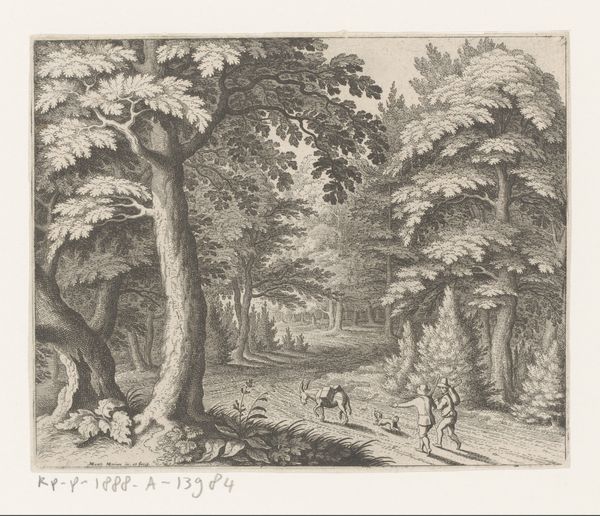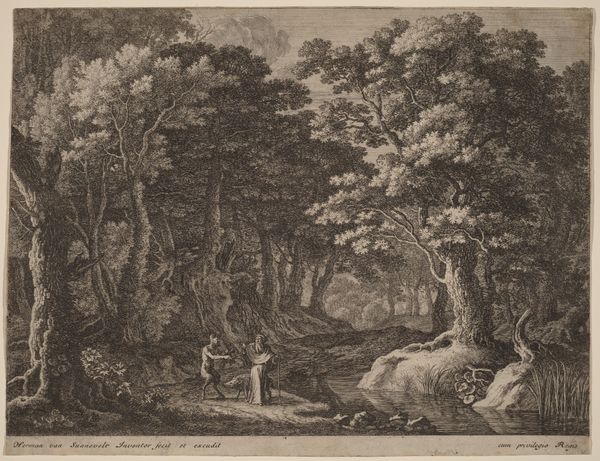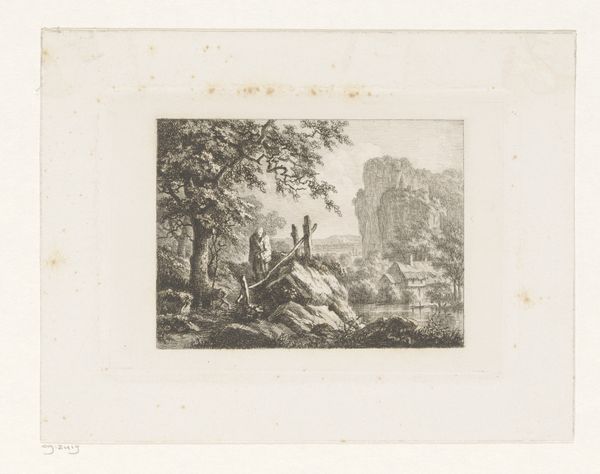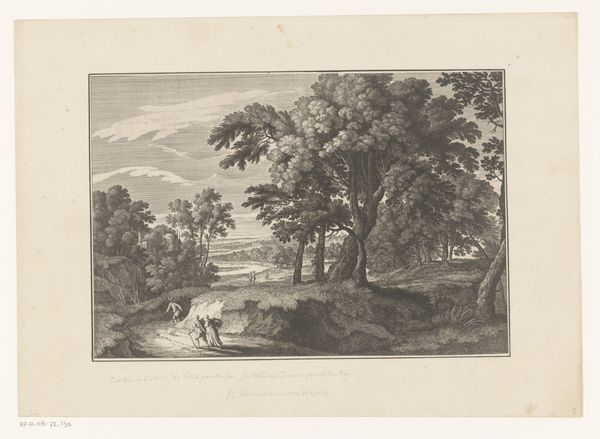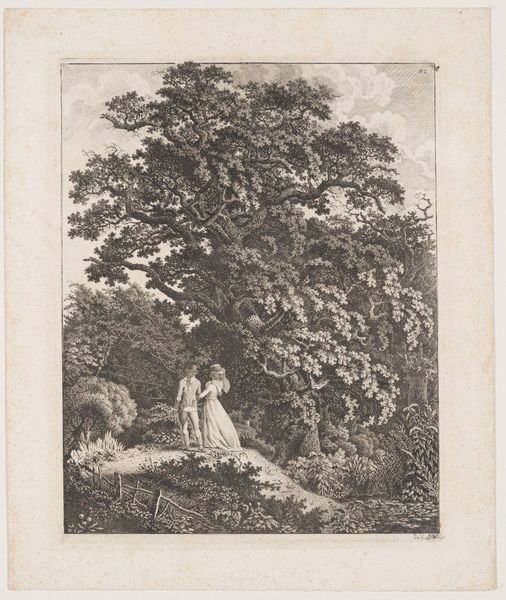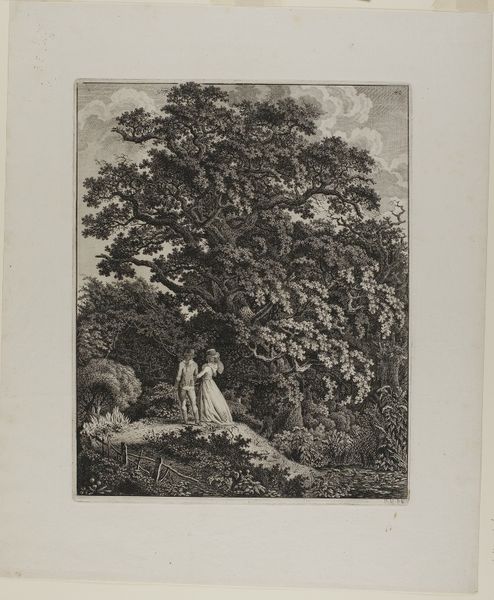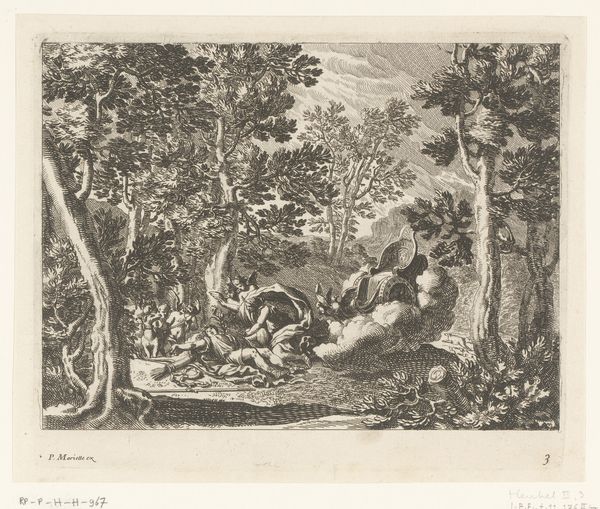
Twee rustende jagers en hun honden met de jachtbuit onder een boom Possibly 1771
0:00
0:00
williamwoollett
Rijksmuseum
Dimensions: height 450 mm, width 555 mm
Copyright: Rijks Museum: Open Domain
Editor: This is "Two Resting Hunters and Their Dogs with the Hunted Game Under a Tree," possibly from 1771, by William Woollett. It’s an engraving, a print. I'm struck by the texture – how the artist creates depth with such intricate lines. What’s your take? Curator: Looking at the material reality of this print – the paper, the ink, the very process of engraving – allows us to understand it beyond just a picturesque scene. How do you think the mass-producibility of prints like this impacted art consumption and accessibility in the 18th century? Editor: That’s interesting, I hadn’t considered that! Did prints democratize art in a way that paintings couldn’t? Before photography, this would’ve been a primary form of visual distribution. Curator: Exactly. The engraving process, the labor involved, the dissemination of these images – it all speaks to a shift in how people interacted with art and how artists navigated the market. Were these prints aimed at wealthy patrons, or at a wider segment of society? The scale would probably imply more accessibility. Editor: Good point about the audience. The landscape feels… curated. I wonder about the relationship between labor and leisure depicted. The hunters appear relaxed, but someone certainly labored to produce that gun. Is there a critique, maybe a celebration of rural life? Curator: Think about the materials consumed in that 'rural life,' the social structures implied in hunting as a leisure activity. Where did those materials come from? Who wasn’t represented in this idyllic scene? Focusing on what is omitted in a “genre-painting” lets us consider power dynamics and material inequality inherent in these landscapes. Editor: That makes me see the print in a whole new way. The labor and materials involved and not shown! It brings more complexity and tension to it. Curator: Precisely. Material analysis is just a way of uncovering those layers. We’re forced to contend with this imagery and all that comes with it, the beautiful *and* the oppressive.
Comments
No comments
Be the first to comment and join the conversation on the ultimate creative platform.
